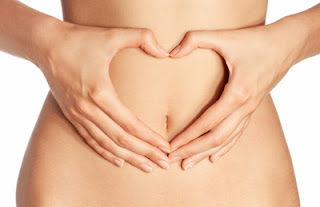These are a group of substances that
include vitamins C & E, along with beta carotene (safe form of vitamin A)
and selenium. Antioxidants boost the
immune system and destroy free radicals (by-products derived from normal biochemical
reactions and energy production) which if allowed to build-up can cause damage
and are associated with cardiovascular disease, many cancers and ageing. Everyone produces free radicals in the
process of creating energy, but an excess may be produced by various factors
such as stress, pollution & illness; antioxidants can disarm the free
radicals and make them harmless.
Vitamin A
This vitamin plays an essential role
in vision, bone growth and the health of the skin and the membranes inside the
body, such as the lining of the respiratory tract.
Active forms of vitamin A, immediately available to the body, come from animal products such as eggs and dairy foods.
Beta-carotene, a substance found in
orange, yellow and green vegetables and fruits is converted into vitamin A in
the body. Foods rich in beta-carotene
include:-
Carrots
Leafy greens – broccoli, cabbage, kale, watercress, lettuce,
spinachButternut squash
Peppers
Apricots
Peaches
Mango
Cantaloupe melon
 |
| Powerful antioxidant formula - those exercising on a regular basis have an even greater need for antioxidants to help repair oxidative damage due to intense exercise |
A very powerful antioxidant that cannot be manufactured by the body; therefore, must be acquired from the diet.
Protects against cell damage and promotes a healthy immune system.
Essential in the formation of collagen, a protein that strengthens bones and blood vessels.
Vital for tissue repair and wound healing.
Promotes the absorption of iron.
Sources:-
Citrus fruits (oranges/tangerines/clementines/grapefruits)
BroccoliBrussels Sprouts
Peppers
Tomatoes
Blackberries
Melon
Pineapple
Cabbage
Strawberries
Kiwi fruit
Mango
Raspberries
Nectarines & peaches
The vitamin C content of food can be
affected by cooking methods; cooking should be kept to a minimum, stir frying
and steaming are best to retain vitamin C content, colour and texture.
As well as fresh fruit &
vegetables, frozen & tinned varieties are just as beneficial.
Vitamin E
A powerful antioxidant protecting
cells from damage.
Helps to prevent the build-up of plaques in the arteries and therefore protects against heart disease.
Has been shown to increase the body’s immune response.
Important for maintaining healthy skin and for helping the healing process of all damaged tissue and skin wounds.
Avocado
BlackberriesMango
Watercress
Almonds
Sunflower seeds
Selenium
Essential for the optimal function of
many aspects of the immune system and plays a role in defending the body
against infection. Scientific studies
suggest that selenium may protect against certain cancers and cardiovascular
disease.
Sources:-
Brown rice
Brazil nuts
Wholemeal bread
Poultry
Fish
Give your body the nutrients it needs, so you not only look, but feel fabulous!
Cathy x











